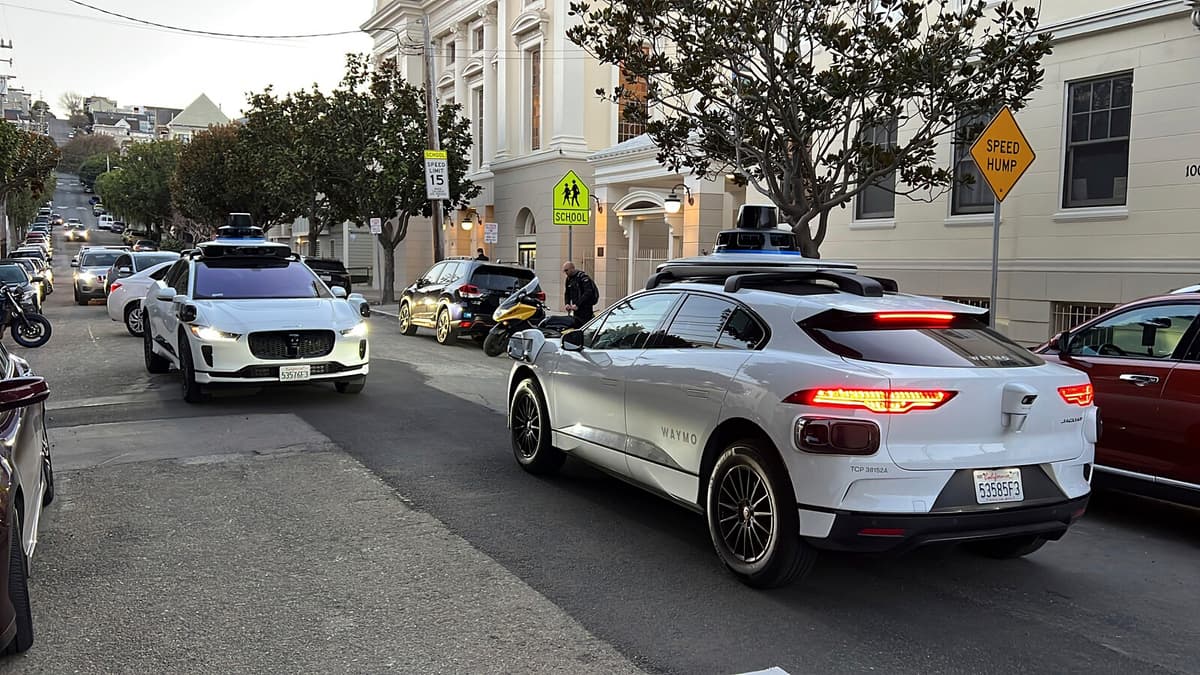On San Francisco's hilly roads in California, it's not uncommon for two white cars with small black hats to meet each other. The unusual thing – apart from the hats – is that no driver sits behind the wheel. Since August 2021, two million driverless taxi rides have been completed in the city, which has become the face of self-driving cars.
In Chinese metropolises like Beijing, Shanghai, Shenzhen, and Wuhan, driverless cars are also rolling.
Overly optimistic
But outside the US and China, the revolution in autonomous vehicles that was predicted five to ten years ago has not yet occurred.
I would say it's two steps forward and one step back, says Yihan Yu, who researches self-driving cars at Chalmers.
Volvo, for example, signed an agreement with Uber in 2017 to deliver 24,000 XC90s to Uber by 2021, which developed its own self-driving technology.
But it didn't happen. So I would say that people have been overly optimistic, says Yu.
An average car stands still 90 percent of the time and takes up space. A self-driving car can be shared by several and thereby free up space and be used more efficiently. They can also become safer in the long run, as they never lose focus, are full or tired.
But accidents do happen – like in October 2023 when a car belonging to GM-owned Cruise dragged a woman six meters before stopping.
The ethical question is tricky, for who is responsible? says Yu.
In theory, it is possible to meet a driverless vehicle on Swedish roads as well. It is possible to get a type approval for the European market for 1,500 vehicles per year, explains Anders Eriksson, technical investigator at the Transport Agency.
But there are many manufacturers who do not see it as economically viable to produce so few vehicles, he says.
Lack of legislation
The driverless vehicles that are rolling in Sweden today do so either within enclosed areas – which do not require permits – or in trial operations. It is mainly vehicle manufacturers, operators like Keolis and Nobina, and start-up companies that have conducted various tests. Currently, seven such trials are underway.
At Apotea's large warehouse in Morgongåva, Uppsala County, there is an example. Here, a small driverless truck is now moving goods 800 meters, from one building to another. There is not even a driver's compartment to step into. If a human needs to take control, it is done remotely from a control room in Gothenburg.
The truck is the second in commercial operation for the Swedish company Einride. The first was put into use last year in the US. The company has also signed a contract with the port of Dubai, the world's tenth busiest.
National legislation lacking
We have the ambition to scale up in both Europe, the US, and Dubai. But we haven't disclosed any numbers, says Henrik Green, head of Einride's autonomous operations.
The electric truck is to make three rounds a day on the Apotea premises, where it shares the road with other goods traffic, and needs to be charged for a couple of hours every other day.
Perhaps it's just a matter of time before self-driving cars and trucks become more common on Swedish roads.
What's lacking, as has been done in other European countries, is to come up with more permanent national legislation that clarifies responsibility issues and the like, says Anders Eriksson.
Gustav Sjöholm/TT
Facts: Some who are betting on self-driving vehicles
TT
Waymo: Google's bet on driverless robotaxis is the one that has come the farthest in the US. Already today, the cars are in place on the streets of San Francisco, Los Angeles, and Phoenix, and are on their way to Austin, Atlanta, and Miami. The company will also start testing in Tokyo, Japan.
Apollo: Chinese search giant Baidu is estimated to have around a thousand driverless taxis just in the metropolis of Wuhan, and is also present in Beijing, Shanghai, and other cities. A local competitor is Alibaba-backed Auto X.
Cruise: GM-owned Cruise conducted hundreds of thousands of driverless taxi rides in San Francisco, Phoenix, Austin, and Houston. But after an accident where a woman was dragged several meters under a Cruise car, all driverless rides were stopped. The company is now driving the cars with human drivers, but hopes to resume driverless rides.
Sources: Respective companies, CNN.





